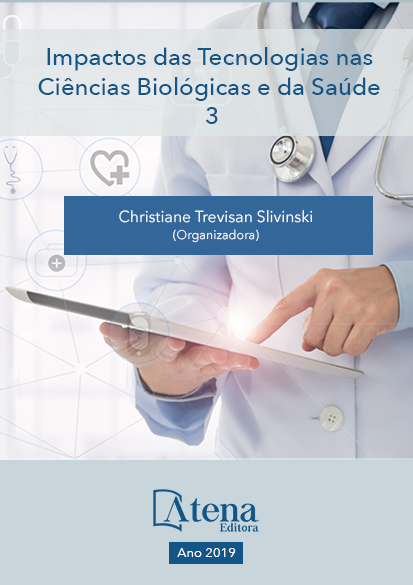
USO DE BIOMASSA FÚNGICA PARA REMOÇÃO DE FÁRMACOS
Nos últimos anos, fármacos têm
sido detectados com frequência no âmbito
mundial em efluentes das estações de
tratamento de esgoto, águas superficiais, etc.
A entrada contínua de fármacos pode levar
efeitos negativos para os seres humanos e o
ecossistema aquático. O objetivo do trabalho
foi avaliar o potencial da biomassa de Trametes
sp em absorver os antibióticos trimetoprima e
sulfametoxazol, que são conhecidos por serem
resistentes a biodegradação. As culturas foram
feitas utilizando biomassa tratada com o calor
e/ou com soluções ácida (HCl 0.1 M), básica
(NaOH 0.1M) e salina (NaCl 0.1 M) em 50
mgL-1 de trimetoprima e sulfametoxazol sob
agitação por 24 horas. A maior quantidade de
trimetoprima adsorvida foi com a biomassa
tratada apenas com o calor (53,62%) enquanto
que para o sulfametoxazol foi com a biomassa
submetida ao tratamento com solução básica
(35,74%). A redução da quantidade dos
fármacos foi observada por análises em HPLC.
USO DE BIOMASSA FÚNGICA PARA REMOÇÃO DE FÁRMACOS
-
DOI: 10.22533/at.ed.37719160112
-
Palavras-chave: Biossorção, Antibióticos, Fungos da Podridão Branca da Madeira
-
Keywords: Biosorption, Antibiotics, White-rot fungi
-
Abstract:
In the last years,
pharmaceuticalshave been detected in
effluents from sewage treatment plants, surface
water, etc. Continued entry of drugs can have
negative effects on humans and the aquatic
ecosystem. The objective of this study was
to evaluate the potential of Trametes sp. in
absorbing trimethoprim and sulfamethoxazole
antibiotics, which are known to be resistant
to biodegradation. Cultures were made using
biomass treated with heat and/or acid (0.1 M
HCl), basic (0.1M NaOH) and saline solutions
(0.1 M NaCl) in 50 mgL-1 trimethoprim and sulfamethoxazole by agitation for 24 hours. The highest amount of trimethoprim
adsorbed was with the biomass treated only with heat (53.62%) whereas for the
sulfamethoxazole it was with the biomass submitted to treatment with basic solution
(35.74%). Reduction in the amount of the drugs was observed by HPLC analysis.
-
Número de páginas: 15
- Elidiane Andressa Rodrigues
- Giselle Maria Maciel
- Priscila Ayumi Sybuia
- Wagner Mansano Cavalini
- Cristina Giatti Marques de Souza
- Caroline aparecida Vaz de Araujo


